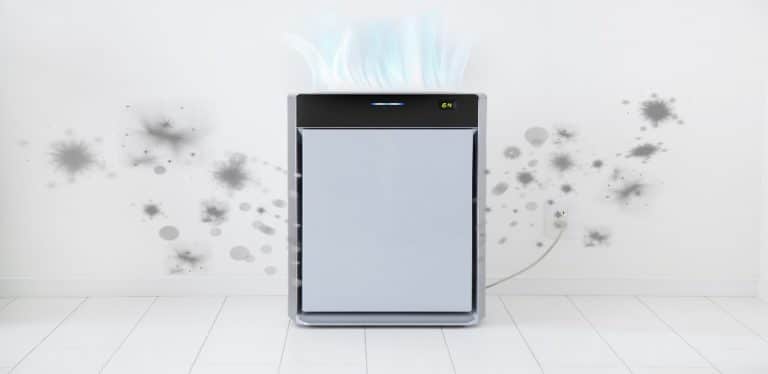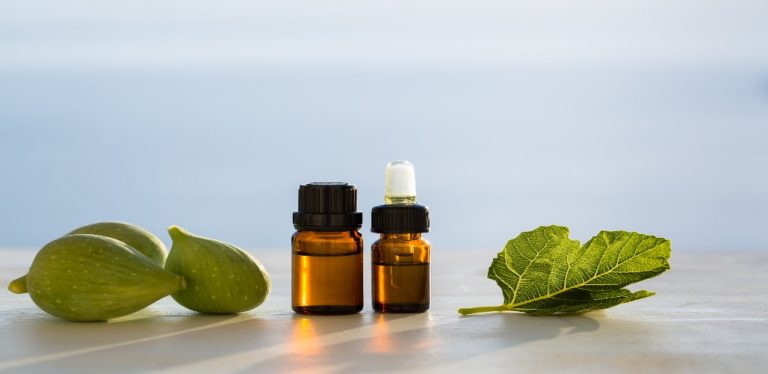How to Choose a Living Green Wall to Clean Your Indoor Air
Return to nature… indoors with a living green wall. From several health benefits (beyond air quality) to growing your own garden indoors, there are several options to installing a Eco wall. This guide walks you through all you need to know to get started, including the wall types, green wall considerations, maintenance, and more. You will be surprised how much your indoor air quality affects your health, and a green wall is a great excuse to “freshen” up your space.
If you are looking to expand your green thumb to the outdoors, check out the guide for garden hose filters to maximize what you are putting in your body.
What Is a Living Green Wall?
Living green walls, also called vertical gardens and eco walls, are walls or tray or panel systems of containers for growing a wide range of plants. The walls can be installed either indoors or outdoors, and they may be freestanding or attached to a wall or other structure. The plants can be added to the wall on the site where the wall is being installed or pre-grown in a nursery and inserted in the wall offsite.
The walls can contain a built-in irrigation system that provides water for the plants. In some cases, the irrigation system is actually a hydroponic system that provides nutrients as well as water. With these internal irrigation or hydroponic system, living walls are very low maintenance.
They often are installed because plants clean air in homes or businesses, but these walls also are used to grow vegetables on apartment patios and to provide privacy screens in the city, among other uses.
–
What Types of Living Walls Exist?
There are two types of living walls — active and passive — and three types of structural systems – panel systems, tray systems, and freestanding systems. The terms “active” and “passive” refer to whether the wall filters the air in the building actively or passively.
Active Living Walls
Active living green walls contain a mechanism that directs the air flow of the building so that the air is blown through the wall for filtering by the plants. These walls are more complicated to install, but are identical to passive green walls in all other ways.
Passive Living Walls
Passive living walls rely on the natural air flow within the building to direct air to the plants for filtering. This passive filtering can be supplemented by installing a heat recovery ventilator (HRV). The HRV draws air in from outside the building while sending the interior air and its accumulated, highly concentrated pollutants and higher humidity level out an exhaust system.
Panel Systems
Panel systems can be installed indoors or outdoors. The plants are pre-grown offsite in the panels, and if the panel is intended for outdoor installation, the plants are chosen to fit the appropriate climate zone.
Tray Systems
Plants for tray systems also are pre-grown offsite in the trays and then inserted into the wall. Tray systems are used for indoor displays. The popular tray system is particularly versatile because the trays can cover a large area, and they can be arranged to create graphic designs, logos, or living works of art. The trays also can be removed and replaced with others containing different plants for a change of seasons, to create a holiday display, or to complement a change in décor.
Freestanding Walls
Freestanding walls can be used outdoors, but they are most common indoors. As with tray systems, you can easily change the plants. You also can change the location of the entire wall.
–
What Are the Benefits of Green Walls?
Green walls offer a ton of benefits. Some of them explicit like noise dampening and better air quality. Others are more implicit. Key green wall benefits are as follows:
Air and Psychology
- Green walls are installed most frequently because the plants clean air of concentrated pollutants and carbon dioxide that build up in homes and buildings while they also produce oxygen. However, these walls have other benefits as well
- The entire field of environmental psychology developed to study the positive effects that exposure to nature has on human beings. Studies in the field support observations that morale, productivity, and health all improve when elements like green walls are included in homes, hospitals, and work and school environments
Noise, Energy, and Space Saving
- Green walls help to dampen noise
- Green walls reduce energy costs by providing shade, by reflecting sunlight rather than absorbing it, by adding moisture to the air through transpiration, and by acting as insulation. So, green walls help to both cool homes and buildings in the summer and maintain warm temperatures in the winter
- Green walls can hold a large number of plants without taking up a large amount of floor space. That makes them ideal for urban and apartment dwellers who may have only a small balcony or patio for raising herbs and vegetables
- Green walls also offer a solution for those who want to raise flowers, herbs, or vegetables but who lack the mobility to tend to plants growing in the ground. They can give the plants growing in a living wall what little care they need while standing or sitting
Privacy, Peace, and Credits
- Privacy is another concern for urban and apartment dwellers. Stand alone green walls provide beautiful and effective privacy screens
- Green walls also can block the wind in breezy locations and provide cooling shade from the sun. More shade and less breeze can make outdoor living spaces more enjoyable for you and your guests
- For those with larger areas to landscape, green walls can serve as dividers that section off areas for different purposes. These walls can create a private breakfast nook for a couple, an exercise or meditation area, or an entertainment space
- Homeowners and businesses can earn LEED credits by installing green walls, which can increase property values.
–
What Types of Plants Are Best for Living Eco Walls?
The best plants for living eco walls will tolerate a wide range of temperatures and humidity levels. They also will tolerate varying levels of soil moisture, at least for a short time. In short, you should choose hardy plants that are undemanding and that you can care for easily. Avoid fussy plants. You can, however choose colorful tropical plants for indoor locations.
For exterior walls, you should choose only plants that can survive in your climate zone or climate zones to the north of your zone. The milder your climate zone, the wider the range of plant choices you have.
–
What Should You Consider if You Want to Raise Herbs or Vegetables in a Living Wall?
If you want to raise herbs or vegetables that you will harvest, you should consider that, as you harvest your plants, you will leave bare spots in your wall. Conversely, using the wall strictly for growing food, the bare spots aren’t a problem.
Trays for Bare Spots
On the other hand, you also are using your living wall for decorative purposes, for shade, for protection from wind, or for privacy, the bare spots do present a problem. For that reason, a tray system or freestanding wall is a better choice than a panel. The trays or the plants in a wall can be more easily replaced than those in a panel.
Lighting Matters
If you’re an apartment dweller considering growing herbs or vegetables indoors due to the lack of a patio or balcony or because you want to grow them year round, either find a well-lighted space for a freestanding wall or install grow lights. When selecting grow lights, look for a set that can mimic natural daylight by producing blue light during the day but warm, redder light in the evening.
Experts advise restaurants against growing herbs or vegetables indoors because of the lack of sufficient light and because of the unattractive bare spots if the plants are harvested.
–
What Type of Maintenance Do Living Eco Walls Require?
Living eco walls without a built-in irrigation system require you to both water and fertilize the individual plants on a regular basis. Usually, you should wait until the top layer of soil dries out before watering plants again.
Regular Care
With the built-in irrigation system, the plants require less maintenance. You should remove damaged or dying leaves from the plants as they appear. You also will need to fertilize the plants periodically according to the needs of each type of plant. In general, vegetables and flowering plants require more frequent fertilizing during their flowering and growing season but less during their dormant seasons.
Know the Seasons (Even Inside)
If your living eco wall includes plants that aren’t native to your area, check when their growing and dormant seasons occur because those seasons may not correspond to the seasons you think of as the usual blooming and growing seasons.
Other Maintenance Considerations
Plants grown in living eco walls with a built-in hydroponic system don’t even require that you fertilize them individually. You simply follow the directions for adding the nutrients to your hydroponic system.
Maintenance is most critical during the first year, and particularly during the first few months, when the best timing for the circulation of the irrigation system is determined.
–
What Type of Irrigation System Do Eco Walls Use?
The most common irrigation system is an automated drip system that maximizes water usage and minimizes water waste. The most efficient systems pump water from a tank and then recirculate it from the bottom of the wall to the top until the tank runs dry. With this type of system, you refill the tank when it is dry. If there is no room for a tank, you can use a direct drip irrigation system which connects directly to the water supply for your home or business.
–
What Concerns Are Associated With Green Eco Walls?
One concern associated with green eco walls is that the irrigation system may increase humidity levels inside the home or business. Interior humidity levels should be kept below 50 percent, particularly in the winter. However, you can easily monitor humidity levels with an inexpensive hygrometer. If you find that humidity levels have risen too high, you can reduce them by installing a dehumidifier.
Noise
Green eco walls with irrigation or hydroponic systems may produce a small amount of noise as the water flows. Green eco walls with forced air systems also may produce some noise. The noise produced by the pump in the irrigation system only occurs for a few minutes during the course of a day, and no noise produced by these walls should be either intrusive or disruptive.
Utility Usage
Green eco walls make little demand on utilities. While the pump for the irrigation system does use some electricity, very little power is required to circulate the water through the wall. Also, because eco wall systems are designed to minimize the waste of water while maximizing the use of the water drawn into the irrigation system, the pump operates only for a few minutes each day.
–
How Much Does It Cost to Install a Living Green Wall?
Prices vary depending on factors such as:
- The size of the wall in square feet
- Whether you want an active or passive wall
- Whether the wall will have a built-in irrigation or hydroponic system, or you will water and fertilize the plants yourself
- The types of plants you include in the wall
- Whether or not you want decorative framing for the wall
- Whether or not you include other custom features in your project
- Cost to install the wall (hiring someone or doing it yourself)
Prices may range from $35 per square foot to $200 per square foot.
–
How Long Will a Green Wall Installation Last?
While a green wall installation uses relatively new technology, the irrigation system, framework, and other hardware could last up to 25 years.
Plants grown in panels could live for five to ten years before they become root-bound, which means that their roots have run out of space to continue to grow. At that point, you will need to replace the panel.
Plants grown in trays have less room for root growth. If you can’t remove the plants from their trays to prune the roots and then re-pot the plants in the tray, then you will need to replace the trays annually.
–
Where to Get/Install a Green Wall
When it comes to actually installing a living green wall, you have two options. The first is to hire a reputable company that may use a network of local contractors. This is especially important if you want an active wall that will require plumbing. Also, a company such as LiveWall or ambius has the best practices and experience in wall framing.
If you decide to go your own route, start small with perhaps one planter. There are a ton of options, including artificial plants for noise dampening and aesthetics to full-blown planter walls. Top vertical wall planters from Amazon are as follows:
–
Conclusion
Green walls offer a ton of benefits beyond improving indoor air quality. Whether you install your own Eco wall or work with a contractor, its sure to improve your life. Don’t forget regular maintenance and consider that for some air quality jobs, such as purifying your home gym, will require more than a green wall. With all things, start small and start enjoying all a green wall has to offer.
[starbox]






